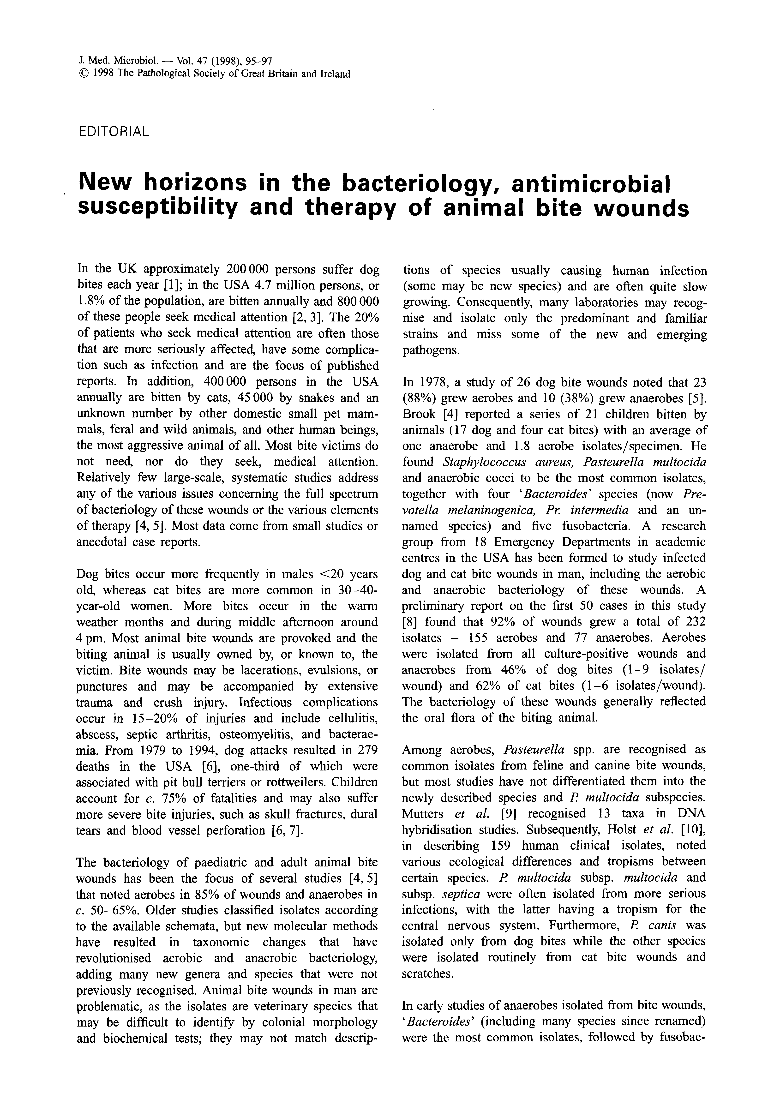
Full text loading...

New horizons in the bacteriology, antimicrobial susceptibility and therapy of animal bite wounds, Page 1 of 1
< Previous page | Next page > /docserver/preview/fulltext/jmm/47/2/medmicro-47-2-95-1.gif
There is no abstract available.

Article metrics loading...

Full text loading...
References

